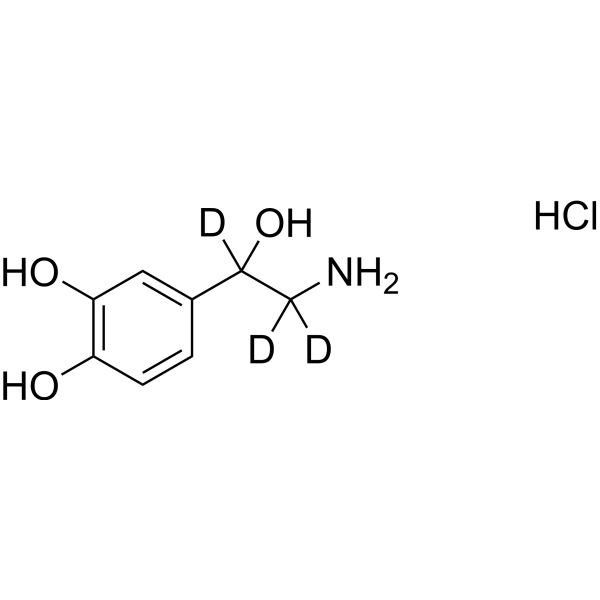DL-Norepinephrine-d3 hydrochloride
Modify Date: 2024-02-04 12:17:28

DL-Norepinephrine-d3 hydrochloride structure
|
Common Name | DL-Norepinephrine-d3 hydrochloride | ||
|---|---|---|---|---|
| CAS Number | 1392208-07-9 | Molecular Weight | 208.66 | |
| Density | N/A | Boiling Point | N/A | |
| Molecular Formula | C8H9D3ClNO3 | Melting Point | N/A | |
| MSDS | N/A | Flash Point | N/A | |
Use of DL-Norepinephrine-d3 hydrochlorideDL-Norepinephrine-d3 (hydrochloride) is the deuterium labeled DL-Norepinephrine hydrochloride[1]. DL-Norepinephrine hydrochloride is a synthetic phenylethylamine that mimics the sympathomimetic actions of the endogenous norepinephrine.DL-Norepinephrine hydrochloride is a neurotransmitter targets α1 and β1 adrenoceptors, has an increasing effect on subendocardial oxygen tension[2]. |
| Name | DL-Norepinephrine-d3 hydrochloride |
|---|
| Description | DL-Norepinephrine-d3 (hydrochloride) is the deuterium labeled DL-Norepinephrine hydrochloride[1]. DL-Norepinephrine hydrochloride is a synthetic phenylethylamine that mimics the sympathomimetic actions of the endogenous norepinephrine.DL-Norepinephrine hydrochloride is a neurotransmitter targets α1 and β1 adrenoceptors, has an increasing effect on subendocardial oxygen tension[2]. |
|---|---|
| Related Catalog | |
| In Vitro | Stable heavy isotopes of hydrogen, carbon, and other elements have been incorporated into drug molecules, largely as tracers for quantitation during the drug development process. Deuteration has gained attention because of its potential to affect the pharmacokinetic and metabolic profiles of drugs[1]. |
| References |
| Molecular Formula | C8H9D3ClNO3 |
|---|---|
| Molecular Weight | 208.66 |